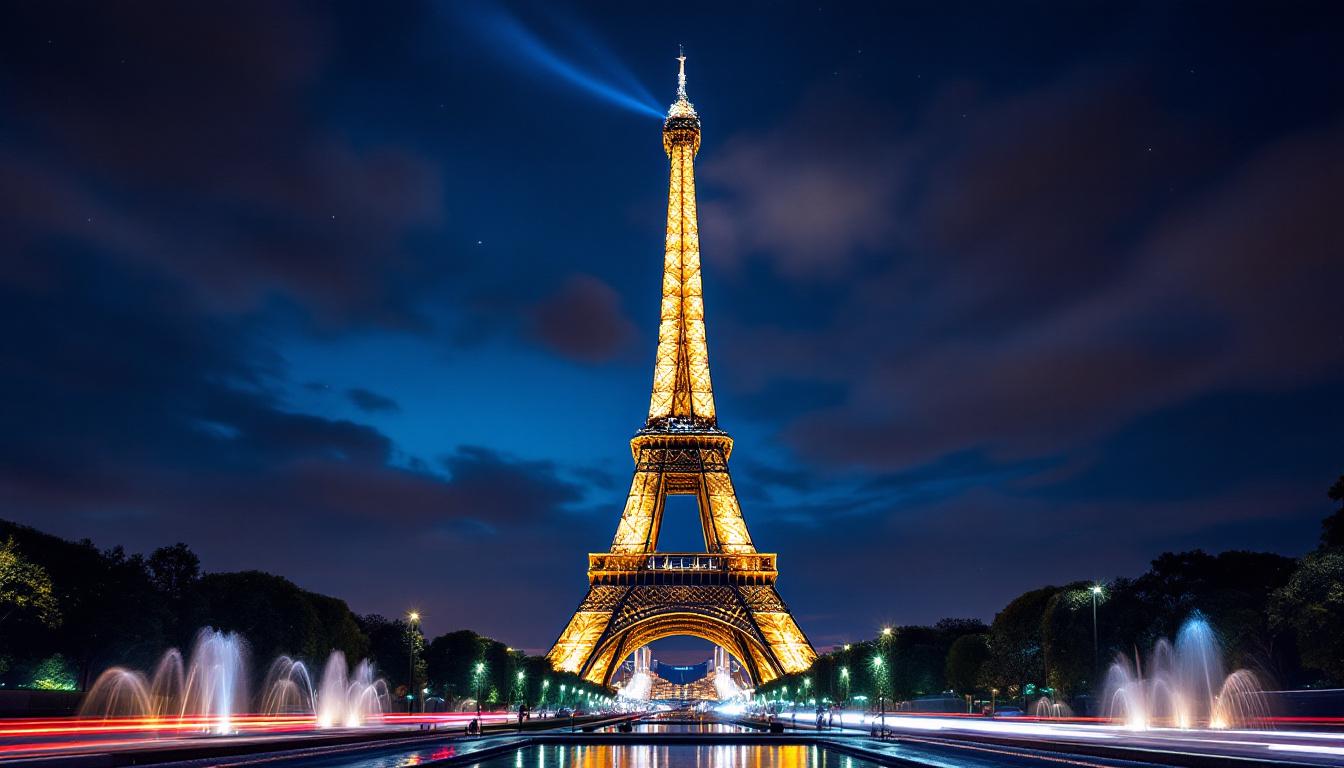7 million visitors ascend the Eiffel Tower annually, making this wrought-iron marvel Paris’s most magnetic attraction in 2025. While tourists flock to this iconic structure, savvy travelers understand that timing and strategy transform an ordinary visit into an extraordinary experience at France’s beloved “Iron Lady.”
The engineering wonder that Parisians once despised
Constructed for the 1889 World’s Fair, the Eiffel Tower was initially meant to be a temporary structure. Many Parisians considered it an eyesore, with prominent artists signing petitions demanding its removal. Today, this 330-meter masterpiece stands as Paris’s defining symbol, proving that even the most controversial landmarks can become beloved icons.
“The tower represents Paris’s evolution from 19th-century industrial power to modern global destination. What tourists see today is actually the tower’s seventh paint job—each requiring 60 tons of paint,” explains Parisian historian Marie Laurent.
Beyond the crowds: Optimal visiting strategy
Peak season runs April through September, with summer months seeing wait times exceeding two hours. Visiting before 10 AM or after 8 PM significantly reduces crowds while offering magical lighting. Weekdays, particularly Tuesday through Thursday, provide more breathing room than weekends.
Pre-booking tickets 4-6 weeks in advance is essential, especially for summit access which frequently sells out. Skip-the-line guided tours, while pricier, offer invaluable historical context and priority access similar to experiences in Spain’s medieval treasures.
The secret third floor experience
While most visitors stop at the second level, the summit offers Paris’s most spectacular panorama. At 276 meters high, the top floor houses a champagne bar in a recreated version of Gustave Eiffel’s private apartment. The narrow summit elevators create bottlenecks, so head directly there upon reaching level two.
Weather conditions frequently close the summit without notice, particularly during high winds or extreme temperatures. Dress in layers—even summer visitors encounter surprising chill and strong gusts at these heights.
Photographer’s paradise: Capturing the perfect shot
For classic tower photographs, Trocadéro Gardens offers unobstructed views across the Seine. Early morning provides empty foregrounds while sunset bathes the iron structure in golden light. After dark, hourly sparkle displays transform the tower into a constellation of 20,000 twinkling lights.
For unusual perspectives reminiscent of Vietnam’s limestone formations, explore Rue de l’Université where the tower dramatically appears between Haussmannian buildings, or descend to Pont de Bir-Hakeim’s lower level for dramatic framing through Art Deco archways.
Cultural immersion beyond the monument
The surrounding 7th arrondissement offers authentic Parisian experiences away from tourist crowds. Rue Cler’s pedestrian market street showcases French culinary traditions with artisanal cheese shops, patisseries, and outdoor cafés frequented by locals.
“Visitors rush between monuments missing Paris’s true spirit. Spend an hour at a café near the tower watching Parisians go about their day—that’s the real Paris experience,” advises local tour guide Jean Dupont.
The area’s hidden gems include Quai Branly Museum’s vertical garden wall and the tranquil pathways of fountain-lined gardens at Square Rapp, where Art Nouveau architecture frames perfect tower views without crowds.
When Paris becomes a futuristic wonderland
Following Paris’s successful Olympic hosting, 2025 brings innovative visitor experiences to the Eiffel Tower. New digital installations allow visitors to explore the structure’s history through augmented reality, similar to developments seen in rapidly transforming metropolitan areas worldwide.
Sustainability initiatives include solar panels powering the tower’s lighting systems and guided tours highlighting Paris’s environmental transformation. The first floor now hosts exhibitions on climate-positive architecture, connecting historical engineering with future innovation.
Sacred moments above the city of light
Despite massive tourism, quiet corners still exist for contemplative experiences reminiscent of sacred ritual spaces. Early morning summit visits offer meditative solitude above the awakening city, while evening visits reveal Paris transforming into its illuminated nighttime persona.
Standing above Paris with the city’s tapestry spread below creates moments of unexpected connection. The Eiffel Tower doesn’t merely offer views of Paris—it provides perspective on human achievement, historical evolution, and the cultural tapestry that makes Paris eternally compelling in 2025 and beyond.
